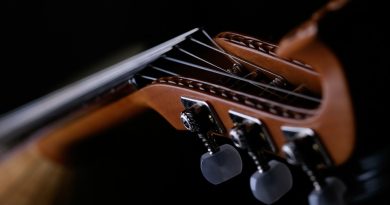Mastering Tone Control: Essential Guitar Tips for Achieving Your Ideal Sound
Mastering Tone Control: Essential Guitar Tips for Achieving Your Ideal Sound
Introduction
Achieving the perfect tone on your guitar is essential for creating the sound you envision. Whether you’re playing live or in the studio, having control over your tone can make a significant difference in the quality of your playing. In this article, we will go over some essential tips for mastering tone control on your guitar.
1. Understanding Your Gear
The first step in mastering tone control is understanding the gear you’re working with. This includes your guitar, amp, and any pedals or effects you may use. Each component plays a crucial role in shaping your tone, so it’s essential to familiarize yourself with how each one impacts your sound.
Start by exploring the different settings on your guitar and amp to see how they affect the tone. Experiment with different combinations of pickups, tone knobs, and volume controls to get a sense of the range of sounds your instrument is capable of producing. Likewise, spend time familiarizing yourself with any pedals or effects you use and how they can enhance or alter your tone.
2. Playing Technique
While gear plays a significant role in shaping your tone, your playing technique also has a substantial impact on the sound you produce. Experiment with different picking styles, hand positions, and fretting techniques to see how they affect the overall tone of your playing.
For example, using a light touch when picking can create a softer, more mellow tone, while digging in with more force can produce a brighter, more aggressive sound. Likewise, experimenting with different positions on the neck and varying your vibrato can add texture and depth to your tone.
3. Tone Knob Adjustments
One of the most straightforward ways to control your tone on the guitar is through the use of tone knobs. Most electric guitars come equipped with at least one tone knob, which allows you to adjust the brightness or warmth of your sound.
Experiment with rolling off the tone knob to create a darker, smoother sound, or crank it up for a brighter, more cutting tone. Finding the right balance between your tone knobs and playing technique can help you achieve the perfect sound for any given situation.
4. Pickup Selection
The pickups on your guitar play a crucial role in shaping your tone. Experiment with different pickups to see how they affect the overall sound of your instrument. For example, the bridge pickup typically produces a brighter, more biting sound, while the neck pickup creates a warmer, more mellow tone.
By experimenting with different pickup combinations and adjusting the balance between them, you can fine-tune your tone to suit your playing style and musical preferences.
5. Amp Settings
Your amp is another essential component in shaping your tone. Experiment with the various settings on your amp, such as the EQ controls, gain, and reverb, to see how they impact your sound. Start by setting your EQ controls to a neutral position and adjusting them gradually to find the right balance for your tone.
Likewise, experiment with different gain settings to achieve the right amount of distortion or overdrive for your playing style. Finally, adding a touch of reverb can add depth and ambiance to your sound, helping to create a more immersive listening experience.
6. Effects Pedals
Effects pedals can be a great tool for shaping your tone and adding depth and texture to your sound. Experiment with different pedals, such as overdrive, distortion, chorus, and delay, to see how they affect your tone.
Start by incorporating one pedal at a time into your signal chain to see how it impacts your sound. Experiment with different settings on each pedal to achieve the desired effect, and don’t be afraid to get creative with your combinations to create unique and innovative tones.
7. Practice, Practice, Practice
Mastering tone control on the guitar is a skill that takes time and practice to develop. Spend time experimenting with different techniques, gear, and settings to find the sound that best reflects your musical vision.
Don’t be afraid to push yourself out of your comfort zone and try new things to see how they affect your tone. By dedicating time to honing your tone control skills, you’ll be able to achieve the perfect sound for any situation and elevate your playing to new heights.
Conclusion
Mastering tone control on the guitar is a journey that requires dedication, experimentation, and a willingness to push the boundaries of your sound. By understanding your gear, experimenting with playing techniques, and incorporating tone control tips into your practice routine, you can achieve the ideal sound you’ve always envisioned. With patience and perseverance, you’ll be well on your way to mastering tone control and creating music that truly captures your unique voice as a guitarist.






